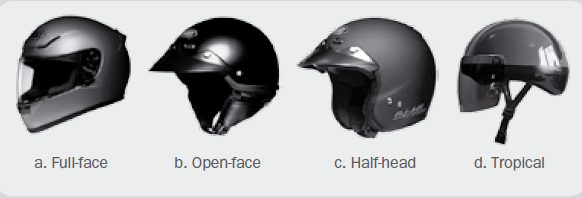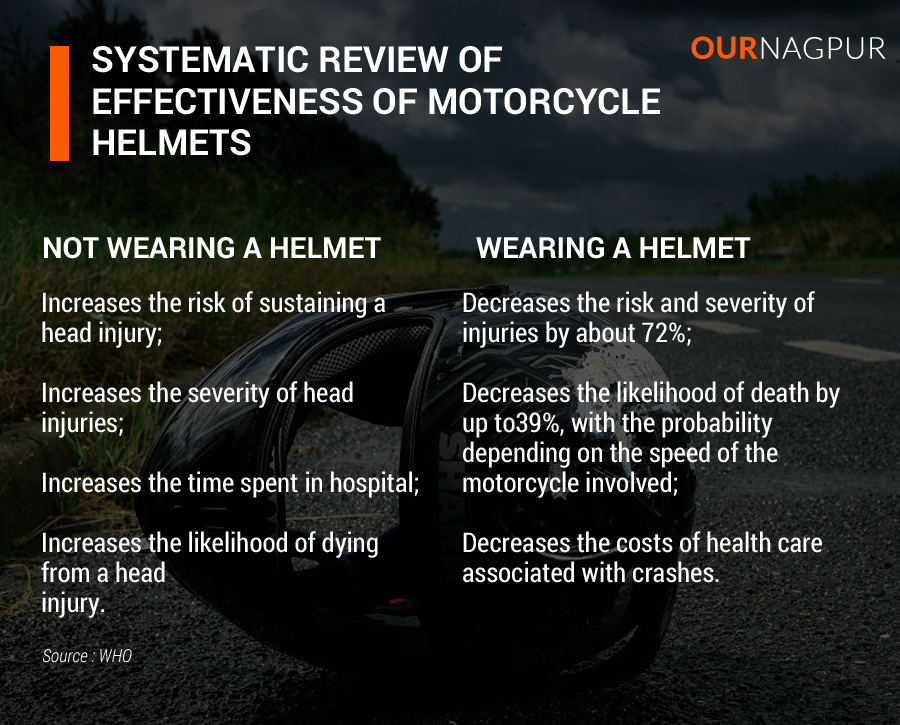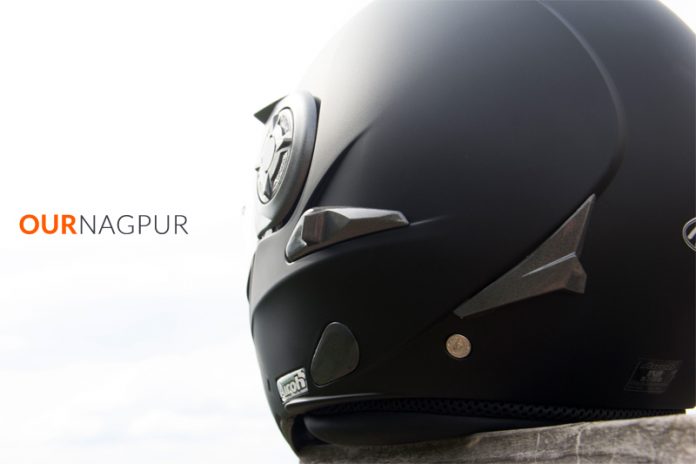Interesting Facts About Motorcycle Helmet
Here is Road traffic injuries are a major public health problem and a leading cause of death
and injury around the world. Read Interesting Facts about Motorcycle Helmet, Each year nearly 1.2 million people die as a result of road crashes, and millions more are injured or disabled
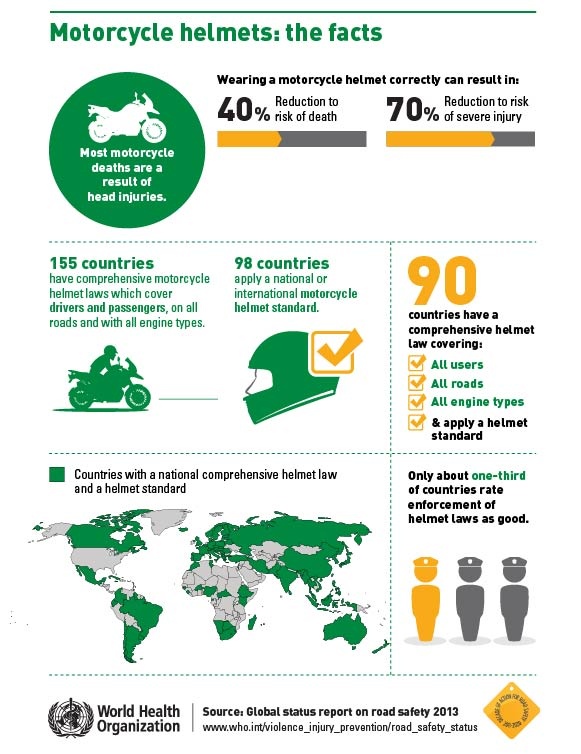
(1). In many low-income and middle-income countries, where motorcycles and bicycles are an increasingly common means of transport, users of two-wheelers make up a large proportion of those injured or killed on the roads. Motorcycle and bicycle riders are at an increased risk of being involved in a crash. This is because they often share the traffic space with fast-moving cars, buses and trucks, and also because they are less visible. In addition, their lack of physical protection makes them particularly vulnerable to being injured if they are involved in a collision. In most high-income countries, motorcycle fatalities typically comprise around 5% to 18% of overall traffic fatalities
(2). This proportion reflects the combined effect of several important factors including the relatively low ownership and use of motorcycles in many developed countries, and the relatively high risk of these motorcycles being involved in crashes involving fatalities. Typically, these risks are much higher for motorcycle than for vehicle travel
Head injuries are a leading cause of death and disability
Injuries to the head and neck are the main cause of death, severe injury and disability
among users of motorcycles and bicycles. In European countries, head injuries
contribute to around 75% of deaths among motorized two-wheeler users; in some
low-income and middle-income countries head injuries are estimated to account for
up to 88% of such fatalities. The social costs of head injuries for survivors, their
families and communities are high, in part because they frequently require specialized
or long term care. Head injuries also result in much higher medical costs than
any other type of injury , such that these injuries exert a high toll on a country’s
health care costs and its economy. Read Global status report on road safety 2015
A helmet protects your head
The technical expertise behind the design of high quality helmets is based on an
understanding of what happens to the head in the event of a motorcycle crash. This
section describes what happens in the event of a motorcycle crash, and then explains
how a helmet works to reduce this effect.
The mechanism of head injuries
- The brain is enclosed within a rigid skull.
- The brain “sits” on bones that make up the base of the skull.
- The spinal cord passes through a hole in the underside of the brain.
- Under the skull, adhering to the bones, is a tough tissue called the dura that surrounds the brain.
- Between the brain and the dura is a space containing cerebrospinal fluid that protects the brain tissue from mechanical shock.
- The brain “floats” in the cerebrospinal fluid but it can only move about 1 millimetre in any direction.
- The skull is covered by the scalp, which provides some additional protection.
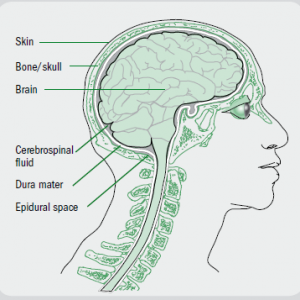
During a motorcycle or bicycle crash there are two principal mechanisms of injury
to the brain: through direct contact and through acceleration–deceleration.
Each mechanism causes different types of injuries. When a motorcycle or bicycle is involved in a collision, the rider is often thrown from the cycle. If the rider’s head hits an object, such as the ground, the head’s forward motion is stopped, but the brain, having its own mass, continues to move forward until it strikes the inside of the skull. It then rebounds, striking the opposite side of the skull. This type of injury can result in anything from a minor head injury, such as concussion, to a fatal head injury.
How a helmet works
A helmet aims to reduce the risk of serious head and brain injuries by reducing the
impact of a force or collision to the head.
- A helmet works in three ways:
It reduces the deceleration of the skull, and hence the brain movement, by managing
the impact. The soft material incorporated in the helmet absorbs some of the
impact and therefore the head comes to a halt more slowly. This means that the
brain does not hit the skull with such great force. - It spreads the forces of the impact over a greater surface area so that they are not
concentrated on particular areas of the skull. - It prevents direct contact between the skull and the impacting object by acting as a
mechanical barrier between the head and the object.

Motorcycle helmet design
- Materials used in the construction of a helmet should not degrade over time, or
through exposure to weather, nor should they be toxic or cause allergic reactions.
Currently, the plastic materials commonly used are Expanded Poly-Styrene (EPS),
Acrylonitrile Butadiene Styrene (ABS), Poly Carbon (PC) and Poly Propylene
(PP). While the material of the helmet shell generally contains PC, PVC, ABS or
fibre glass, the crushable liner inside the shell is often made out of EPS – a material
that can absorb shock and impact and is relatively inexpensive. However, helmets
with EPS liners should be discarded after a crash, and in any case users should
replace such helmets after 3–5 years of use. - Standards often set the minimum coverage of a helmet (see Module 3). Half-head
helmets offer minimal coverage. Full-face helmets should ensure that the wearer’s
peripheral vision and hearing are not compromised. - To ensure that a helmet can absorb the shock of a crash, the crushable liner should
be between 1.5 cm and 3.0 cm in thickness.[amazon_link asins=’B00OJZOBRA,B013NCSEF4,B00NQ2RQXI,B01MSYN3ZD,B00NXFPUYU’ template=’ProductCarousel’ store=’ourngpnew-21′ marketplace=’IN’ link_id=’ad9c74a7-c05e-11e7-8d82-bbc087b28d47′]
In addition to the previously mentioned design issues, there are also various styles of
helmets which afford different protection.
